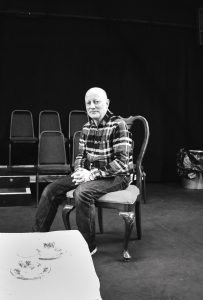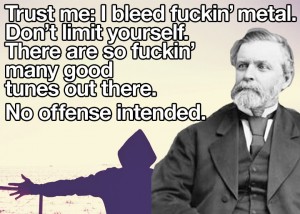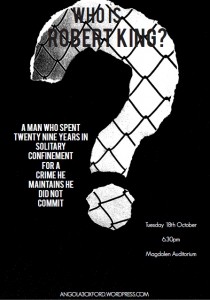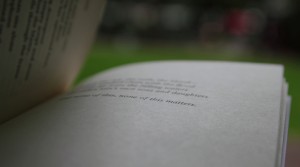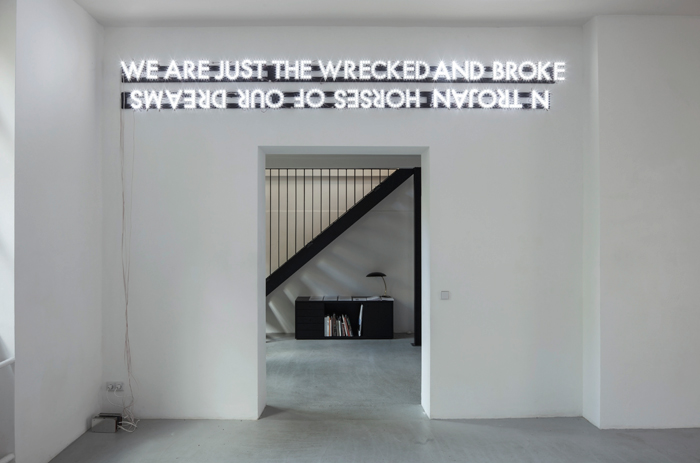
“I call myself an artist that writes with poetry”: An Interview with Robert Montgomery
by Rosie Collier | August 14, 2016
I pick up the phone to Robert Montgomery and start speaking in the same manner as I would to someone I have known for years. ‘Hey, how are you? Have you had a really busy week?’ I ask him, rather abruptly. He humours me, and decides to talk me through his schedule that week. ‘I’ve been in Brussels, doing an Opera with La Monnaie, which does a lot of avant-garde productions. Before that I was doing poetry readings with a new poetry press I’m starting in London, the New River Press…’.
Robert Montgomery is a conceptual artist with a poetic voice. He creates billboard works, light pieces, fire poems, and wood pieces, each time intertwining poetry with powerful visual images. His billboard pieces which recently took over the sidewalks of London’s Old Street and his light piece ‘The People You Love Become Ghosts Inside You’, exhibited in 2015 for National Poetry Day at the South Bank Centre, are some of his most renowned works. What is so striking about Montgomery’s art is his intertwining of visual image with language. His glossy and lurid light installations are made up of poetic fragments. His words transcend the confines of the page where sentences commonly stay: they are blown up and amplified, becoming a visually impressive spectacle. One reads his art as they would read a poem. In this way, Montgomery challenges the assumptions of what it is that makes a poet, and what it is that makes a visual artist. I ask him about this, questioning whether he would call himself an artist or a poet. ‘I call myself an artist that writes with poetry’ he tells me simply, going on to talk about his influences both literary and artistic: ‘Obviously my work as a visual artist comes from artists like Lawrence Weiner and Jenny Holzer. I think there is a kind of line from them that I’m conscious of.’ But he also states that he grew up loving the poetry of Phillip Larkin, Sylvia Plath and John Ashbery. The boundaries separating poetry and the visual arts are, to Montgomery, indistinct. As much as John Ashbery’s work has been shaped by the artistic movement of expressionism, existing as what Fred Moramarco calls a ‘verbal canvas’, Montgomery’s work is something of the reverse. It is a poetic canvas, influenced by the literary realm.
I wonder if there is something quite daunting about Montgomery’s amplification of his own words. Poetry is personal, and the moment it is blown into these gleaming light installations and billboard pieces Montgomery is placing his interior self out there for all the world to see. Unlike the spoken word, his voice is not ephemeral. It is the physicality and visual presence of his words that make them so distinct. As he places his work in the centre of spaces such as Trafalgar Square and Old Street, anyone can look. Yet beyond the public realm, Montgomery’s work has gained a large following on the internet. He tells me he doesn’t think the experience of looking at his work in person, and looking at it behind a digital screen, makes any difference to how one views his art: ‘I think flat like a painter. There’s no Henry Moore-like meaning, you must situate your work to get a third dimension.’ There’s a way in which Montgomery’s work transcends space. He talks about how around 2003 he became conscious that he was showing a lot of work in galleries, and so ‘wanted to step out of the museum and go onto the street’. He did so, and after having conquered the streets, he tells me the internet came along and his ‘audience got so much bigger, so much more quickly’. For Montgomery, the internet is a fantastic vehicle for poetry, and he describes it in the context of his own work as ‘an absolutely transforming medium.’ He touches upon this in some detail, talking about the power of ‘sharing’ an image, and what this can mean for artists and poets alike: ‘I think of the internet as a supernatural medium. The way you can share [an image] and in the same second someone in New York can see something you have shared in London is a kind of almost telepathic medium.’ The speed and distance in which an image can be shared on social media enables the work of artists, poets and writers to be dispersed across the globe with a mere click of a button. It can then be discovered, rediscovered, retweeted, and posted again and again, allowing its platform to grow each time. This is a fact I don’t question, and I admit, it was someone’s tweet that introduced me to Robert Montgomery’s art.
We talk about the power of sharing the image, but leave our topic of the internet and poetry there. Other than something which allows art to be shared, the internet is also a platform that enables art to be published. No longer does poetry exist only in the confines of published ‘Selected Poems’, anthologies, and pamphlets. All you need now is a Tumblr or WordPress account to place your fiction into the digital world. An extreme example of this is Berlin ArtParasites, an online magazine founded in 2011 that publishes poetry from all around the globe. Existing as a webpage, it is an efficient platform in which one can both read the work of others, and publish their own writing. As much as the internet is a platform for work to be shared, it is more specifically a platform to get one’s work out into the digital realm, something which is especially the case for the younger generation. Montgomery acknowledges this, mentioning these ‘kids on the internet’, the kids who occupy Tumblr, WordPress, and Instagram in attempts to get their art noticed. As this work is published online, it is likely that little money is being received for it. Montgomery picks up on this, seeing poetry as ‘the art form with the least monetary rewards’—especially, I might add, if your work is only being published online. He tells me this is why he’s starting New River Press, founded by himself and his partner Greta Bellamachina, as a publishing house looking to publish young poets who ‘it will take Faber years to pick up on’.
This relationship between the poem and the price is significant in the context of Montgomery’s ‘Pay with a Poem’ project, a global initiative where in cafés across the world, from London to Shanghai to Dubai to Moscow, individuals paid for their coffee by exchanging their poetry. ‘[That was a] project with Julius Meinl in Austria, who gave away coffee away in shops for free if you gave in a poem. So we gathered them all together, 100,000 poems gathered together from around the world. We put some of them on a tree here [in London], put some of them on a bridge in Milan…’ The poetry of a commuter on his way to the office in London, of a passer-by stopping for drink in Hamburg, of a child given pencils and paper and told to write something as a distraction in Moscow, each exchanged for a cup of coffee. For one day, what Montgomery calls ‘a small day of utopia’, currency is exchanged for feeling. The quality of these works are irrelevant, all that matters is that something is being said, and the rewards, unlike those in the literary realm, are the same throughout: a coffee.
Through their ‘Pay with a Poem’ project Montgomery and Meinl are encouraging ordinary people to engage in creativity and expression, in a way they might not otherwise have the opportunity or ability. For this one day, coffee shops across the globe embrace and celebrate the arts. We talk of whether this is something that is being achieved by our current government. Montgomery doesn’t seem to think so. ‘There’s a lot of regressive things happening with things like the closing of libraries. In the Borough of London, half the libraries are closing this year. University fees have increased by 300 percent in the past five years’, he tells me. He goes on to discuss with me a detailed analogy as to why his success would have been unlikely if he’d been starting out in 2015. ‘John Lennon [doesn’t get to go] to art school. Because if art schools are nine thousand pounds a year, John Lennon, from his demographic background as a working class kid from Liverpool, probably doesn’t get to go. So we have no Beatles and [laughs] without the Beatles we have no British pop culture of the sixties’. On this topic of the importance of arts education, I tell him about my own experiences with art as an academic subject. ‘It has a negative perception attached to it, a sort of stigma I guess’ I say, and he interrupts, sighing. ‘Oh my god, there’s a stigma now in education and the arts. Things have got even worse since I left school. Oh my god, Jesus god almighty. I don’t know if it’s a stigma, and if so then that’s an outrage. I think there’s a democratic danger with diminishing [the arts], we’re impoverishing a creative culture.’ While Montgomery, for one day only, can promote creativity in coffee shops across the globe, it appears this same thing is not being achieved by the country’s education system. The perception of arts education as as less significant aspect to a child’s schooling persists.
‘Sorry, did I rant a bit there? I didn’t mean to’, he says. We laugh, and end the conversation on this topic of arts and education. He’s amazed when I tell him people told me that I wouldn’t get to a top university if I kept Art as an A Level. ‘Kind of incredible’, he calls it.
Original image: Robert Montgomery
